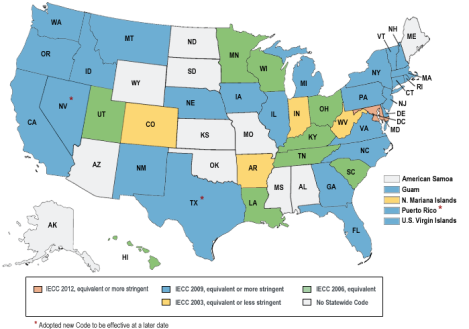
Building houses according to updated energy conservation codes saves homeowners money. (Photo by 401k.)
Cross-posted from Energy Self-Reliant States, a resource of the Institute for Local Self-Reliance.
In energy policy, lawmakers often prefer carrots to sticks, because this strategy minimizes the opposition. But mandatory rules, like building energy codes, can save energy and pay back several times over during the useful life of buildings.
The state of Illinois is poised to become a regional leader by adopting the 2012 International Energy Conservation Code (IECC), an example of small-seeming rules with big impact. For example, 40 percent of primary energy consumption in the U.S. is in buildings, along with about 40 percent of greenhouse gas emissions. Thus, adopting the 2012 IECC, with energy efficiency standards 28 percent stronger than the 2006 code, can make a big dent in carbon emissions.
The financial savings can add up, as well. The federal Energy Information Administration estimated in 2005 that homeowners in the Midwest spent an average of $1,800 per year on household energy use. Assuming states had already adopted the 2006 IECC for the previous expenditure figure, the implementation of the 2012 code could save families $500 per year.
Builders often fight codes, and the ones in Illinois are no different, claiming the cost of the improvements will add $5,000 to the cost of a new home. But a recent report [PDF] found that building a home to the 2012 code in Illinois will increase the home’s cost by $1,500 (or about $6 a month), and save save $33 per month in energy costs.
In other words, improved energy efficiency in building codes saves homeowners money from day one.
The U.S. Department of Energy supplies maps depicting the current status of state building codes. Their residential map is shown below (click to embiggen).
Already, 30 states have adopted the 2009 IECC or better, and interestingly, the pattern does not follow traditional red/blue state political divisions.
Of course, a code is only as good as compliance — enforced by municipal government — and the Alliance to Save Energy suggests that compliance can be spotty. Anyone know of good studies of code compliance?




